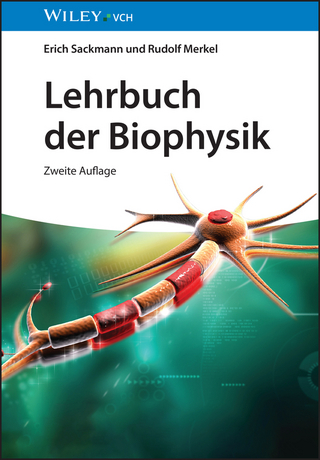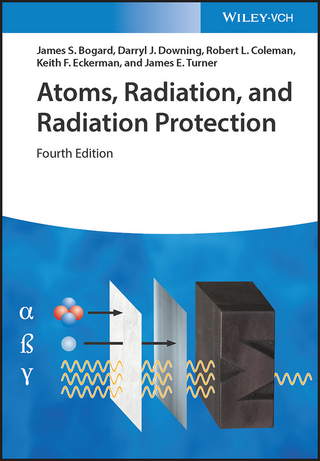
Chemical Mutagens
Kluwer Academic / Plenum Publishers (Verlag)
978-0-306-40771-0 (ISBN)
- Titel ist leider vergriffen;
keine Neuauflage - Artikel merken
The success of his lO-year effort with these volumes is another testimony to Dr. Hollaender's many contri- butions to the field of environmental mutagenesis. As Dr.
1 Effects of Chemicals on Chromosome-Aberration Production in Male and Female Germ Cells.- 1. Introduction.- 2. Methods of Detecting Chromosome Aberrations Induced in Germ Cells.- 3. Male Germ Cells.- 3.1. Preparation Techniques.- 3.2. Chromosome Studies of Spermatogonial Mitoses.- 3.3. Chromosome Analysis in Spermatocytes after Treatment of Stem-Cell Spermatogonia.- 3.4. Chromosome Analysis in Spermatocytes after Treatment of Meiotic Prophase Stages.- 3.5. Analysis of Cleavage Stages after Treatment of Meiotic and Postmeiotic Male Germ Cells.- 4. Female Germ Cells.- 4.1. Preparation Techniques.- 4.2. Analysis of Chromosome-Aberration Induction in Oocytes.- 5. Interpretations and Conclusions.- 6. References.- 2 The Use of Immunological Techniques to Detect Cells of Rare Genotype.- 1. Introduction.- 2. Isolation of Antibodies Suitable for Detecting Mutants: Antibodies to Single and Multiple Amino Acid Differences in Proteins.- 2.1. General.- 2.2. Isolation Procedures and Examples.- 2.3. Detection of Monospecific Antibody in the Serum.- 3. Detection of Mutants with the Help of Antibodies.- 3.1. Hemoglobin System.- 3.2. Lactate Dehydrogenase-X System.- 3.3. Immunoglobulin-Allotype System.- 3.4. H-2 System.- 4. Conclusion.- 5. References.- 3 Metabolic Activation Systems in Vitro for Carcinogen/Mutagen Screening Tests.- 1. Introduction.- 2. Common Pathways for the Activation and Detoxification of Carcinogens/Mutagens.- 2.1. Enzymatic Activation Reactions That Introduce or Modify Functional Groups (Phase I Reactions).- 2.2. Enzymatic Conjugation (Phase II Reactions).- 2.3. Detoxification Reactions of Carcinogens/Mutagens.- 3. Subcellular Metabolic Activation Systems: Some General Remarks.- 3.1. Hepatic Postmitochondrial Supernatant (S-9) Fraction from Rats.- 3.2. Purified Subcellular Hepatic-Tissue Fractions (Enzymes) from Rat Liver and Other Sources.- 3.3. Species Variations in Hepatic Metabolic Activation Reactions.- 3.4. Metabolic Activation by Rodent Extrahepatic-Tissue Fractions.- 3.5. Carcinogen/Mutagen Activation by Human Liver (or Other Tissue) Enzymes.- 4. Cellular Metabolic Activation Systems.- 4.1. Cultured Cells That Possess Metabolic Activity.- 4.2. Assays That Use Cultured Mammalian Cells for Metabolic Activation.- 4.3. Evaluation of the Efficiency of Carcinogen/Mutagen Screening Tests That Use Intact Mammalian Cells for Metabolic Activation.- 5. Combination of in Vivo-in Vitro Screening Tests of Carcinogens/Mutagens: Recent Developments.- 6. Problems in the Extrapolation of Data Obtained in Vitro to the Intact Mammalian Organism.- 7. Conclusions.- 8. References.- 4 Microbial Metabolism of Environmental Chemicals to Mutagens and Carcinogens.- 1. Introduction.- 2. Definition of a Compound as a Promutagen.- 3. Chemicals That Can Be Activated to Environmental Mutagens and Carcinogens by Microorganisms.- 3.1. Azo Dyes.- 3.2. Glycosidase Conjugates.- 3.3. Nitroaryl and Heterocyclic Compounds.- 3.4. N-Hydroxy Aromatic Amides and Amines.- 3.5. Chemicals That Require Activation by Cytochrome-P-450-Dependent Monooxygenases.- 3.6. Ethidium Bromide.- 4. Role of the Intestinal Microflora in the Formation of Mutagens and Carcinogens.- 5. Short-Term Test Systems and the Role of Microorganisms in the Metabolism of Chemicals into Mutagens: Conclusions.- 5.1. Metabolic Systems of Indicator Organisms.- 5.2. Activation by Intestinal Microbial Flora and Short-Term Test Systems.- 6. Summary.- 7. References.- 5 Short-Term Tests for Chemicals That Promote Aneuploidy.- 1. Introduction.- 2. Test Systems.- 2.1. Meiotic Systems.- 2.2. Mitotic Systems.- 3. Discussion.- 3.1. Biological Relevance.- 3.2. Application.- 4. References.- 6 Nitrates and Nitrites: Ingestion, Pharmacodynamics, and Toxicology.- 1. Introduction.- 2. Major Sources of Human Exposure.- 2.1. Ingestion.- 2.2. Endogenous Synthesis.- 3. Flow in Humans.- 3.1. Ingestion and Endogenous Synthesis.- 3.2. Active Nitrate Transport from the Gastrointestinal Lumen.- 3.3. Plasma Levels of Pertinent Anions.- 3.4. Tissue Compartments and Nitrate Storage.- 3.5. Salivary Recirculation of Nitrate.- 3.6. Gastric Recirculation of Nitrate.- 3.7. Mammary Transport of Nitrate.- 3.8. Placental Transport of Nitrate.- 3.9. Nitrate and Nitrite Loss in Vivo.- 3.10. Nitrate in Human Urine.- 4. Suspected Health Consequences.- 4.1. Nitrate Ingestion: Tolerance to Acute Effects.- 4.2. Nitrate Ingestion: Possible Long-Term Effects.- 4.3. Ingestion and in Vivo Production of Nitrite.- 5. Reduction of Exposure.- 5.1. Cured Meats.- 5.2. Vegetables.- 5.3. Water.- 6. Summary.- 7. References.- 7 The Relation between Reaction Kinetics and Mutagenic Action of Monofunctional Alkylating Agents in Higher Eukaryotic Systems: Interspecies Comparisons.- 1. Introduction.- 2. Mechanism of Action of Alkylating Agents.- 3. Reaction of Alkylating Agents with DNA and Proteins.- 3.1. Alkylalkanesulfonates.- 3.2. Dialkylsulfates.- 3.3. Dialkylnitrosamines, Alkylnitrosamides, and Alkylnitrosoguanidines.- 3.4. Comparison of Reactivity.- 3.5. Significance of Alkyl Groups in DNA.- 4. Response to Alkylating Agents.- 4.1. Higher Plants.- 4.2. Drosophila.- 4.3. Mammals.- 5. Interspecies Comparisons.- 5.1. Effectiveness.- 5.2. Efficiency.- 5.3. Carcinogenicity.- 5.4. Problems for Future Work.- 6. Conclusions.- 7. References.- 8 The Human Leukocyte Test System.- 1. Introduction.- 2. Some Early Events during Human Leukocyte Stimulation...- 3. DNA Synthesis, Mitosis, and the Diversity of the Culture System.- 4. Differences in Mutagen Sensitivity of Leukocyte Subpopulations?.- 5. Fate of Chromosomal Damage during Successive Cell Cycles.- 6. Selected Examples of in Vivo Investigations with Human Leukocytes.- 6.1. Alcohol and Tobacco Smoke.- 6.2. Psychotropic Drugs.- 6.3. Illicit Drugs.- 6.4. Antiepileptic Drugs.- 7. Appendix: Standard Protocol for Human Leukocyte Culture Preparation.- 7.1. Contents of a Standard Leukocyte Culture.- 7.2. Preparation of Cultures.- 7.3. Preparation of Slides.- 7.4. 5-Bromodeoxyuridine-Labeling.- 7.5. A Note on Centromeric Sister-Chromatid Exchanges.- 8. References.- 9 The Activation of Chemicals into Mutagens by Green Plants.- 1. Introduction.- 2. Plant Activation of Promutagens.- 2.1. In Vivo Plant Activation.- 2.2. In Vitro Plant Activation.- 3. Deactivation of Mutagens by Plants.- 4. Response of Plant Genetic Assays to Known Mammalian Promutagens.- 4.1. Nitrosamines.- 4.2. s-Triazines.- 4.3. Maleic Hydrazide.- 4.4. Other Promutagens.- 5. Conclusion.- 6. References.- 10 Unscheduled DNA Synthesis in Mammalian Germ Cells-Its Potential Use in Mutagenicity Testing Gary A. Sega.- 1. Introduction.- 2. What Does the Occurrence of Unscheduled DNA Synthesis in Mouse Germ Cells Mean?.- 3. Procedures for Treating Animals with [3H]Thymidine and Chemical Mutagens.- 3.1. Injection of Mice with [3H]Thymidine.- 3.2. Treatment of Mice with Chemical Mutagens.- 4. Detection of Unscheduled DNA Synthesis in the Germ Cells.- 4.1. Procedures for Liquid Scintillation Counting.- 4.2. Autoradiographic Procedures.- 5. Germ-Cell Stages That Undergo Unscheduled DNA Synthesis When Exposed to Mutagenic Agents.- 6. Comparison of the Sensitivity of the Test for Unscheduled DNA Synthesis with That of Other Genetic Tests.- 7. Relationship between Genetic Effects and Unscheduled DNA Synthesis Induced by Mutagens.- 8. Development and Characterization of Mouse Stocks with Reduced Levels of Unscheduled DNA Synthesis in Their Germ Cells.- 9. Relevancy of the Test for Mammalian Germ-Cell Unscheduled DNA Synthesis Compared with That of Other Mutagenicity Tests.- 10. References.- 11 Aspergillus nidulans-An Organism for Detecting a Range of Genetic Damage.- 1. Introduction.- 2. Basic Biology.- 2.1. Life Cycle.- 2.2. Nuclear Cycle.- 3. General Methodology.- 3.1. Media.- 3.2. Growth and Collection of Conidial Sample.- 3.3. Removal of Germination-Inhibitory Substances.- 3.4. Method of Treatment.- 3.5. Other Techniques Associated with the Various Assays.- 3.6. Metabolic Activation.- 4. Assay Systems.- 4.1. Haploid Mutational Systems.- 4.2. Diploid Genetic Systems.- 4.3. Masked Genetic Damage: Examination of the "Normal Colonies".- 5. Concluding Remarks.- 6. References.
| Erscheint lt. Verlag | 28.2.1982 |
|---|---|
| Zusatzinfo | biography |
| Verlagsort | Dordrecht |
| Sprache | englisch |
| Themenwelt | Naturwissenschaften ► Physik / Astronomie ► Angewandte Physik |
| ISBN-10 | 0-306-40771-X / 030640771X |
| ISBN-13 | 978-0-306-40771-0 / 9780306407710 |
| Zustand | Neuware |
| Haben Sie eine Frage zum Produkt? |
aus dem Bereich


